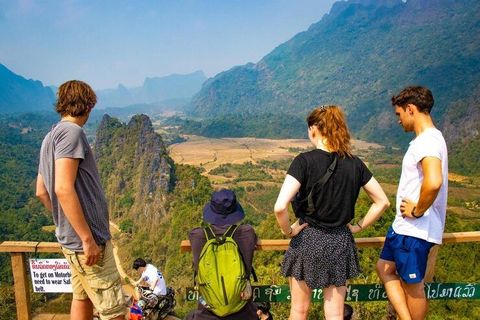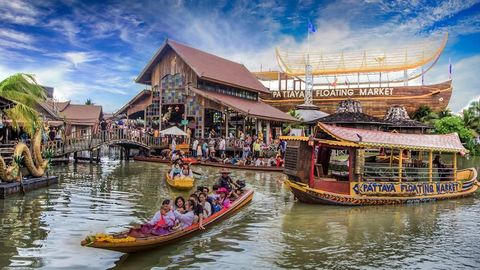Explore the World: Top Destinations for Adventure Tourism – A Complete Guide
Adventure tourism refers to travel that includes exploration, physical activity, and often some element of risk. It ranges from trekking in rugged mountains to wildlife safaris, glacier hikes, white-water rafting, and more. These experiences attract travelers who want more than just sightseeing — they want to engage actively with nature, local cultures, and challenging environments.
This kind of tourism exists because many people seek meaningful, transformative journeys rather than passive vacations. As infrastructure, safety, and technology have improved, adventure travel has become more accessible to a wider audience.

Importance
Adventure tourism matters today for several reasons:
-
Economic Impact: It supports local economies, especially in remote or rural areas, by creating jobs and promoting community-led tourism.
-
Sustainability: Many adventure travelers are environmentally conscious; their trips often encourage conservation and low-impact tourism.
-
Health and Well-being: Physical challenges like trekking or cycling promote fitness, and immersion in nature can reduce stress.
-
Cultural Engagement: Travelers often interact deeply with local communities, learning traditions, and contributing to local livelihoods.
-
Growing Demand: With rising interest in experiential travel, adventure tourism is a fast-growing segment in the global tourism market.
For travelers, adventure tourism offers personal growth, memorable experiences, and a chance to step outside their comfort zones. For host communities, it brings sustainable development opportunities.
Recent Updates
Adventure tourism has evolved significantly in 2024–2025, fueled by shifting traveler preferences and industry innovation:
-
The Adventure Travel Trade Association (ATTA) reports that demand has stabilized after post-pandemic growth. Their 2025 insights reflect a return to more sustainable trip volumes.
-
Culinary adventure travel is gaining traction, with more travelers combining food exploration and physical activity.
-
Wellness-adventure hybrids (like meditation treks or surf yoga) are rising sharply, blending physical challenge with mental wellness.
-
Adventure travel operators increasingly use wearable tech (fitness trackers, GPS) to monitor safety and performance on trips.
-
The global adventure tourism market continues to grow rapidly, driven by sustainability, urban-to-rural travel, and digital platforms.
These trends show how adventure tourism is diversifying and becoming more responsible, connected, and adaptable.
Laws or Policies
Regulations and policies play a key role in shaping adventure tourism in popular destinations:
-
Environmental Protection Laws: Many countries regulate permits, visitor numbers, and allowed activities in sensitive natural areas (like national parks or glacial regions).
-
Safety Standards: Governments or local authorities often mandate risk-management plans, licensed guides, and safety equipment for high-risk adventure activities. The ATTA report notes that 81% of operators now document formal risk management strategies.
-
Sustainable Tourism Policies: Many nations incentivize eco-friendly tourism through certifications, grants, or tax benefits. This encourages local operators to adopt greener practices.
-
Visa and Entry Regulations: Some adventure regions may have special entry requirements or restricted zones, especially in remote or culturally sensitive areas.
-
Community Benefits Regulations: Policies may ensure that local communities benefit economically — for example, by requiring a percentage of tourism revenue to stay local, or by promoting community-based tourism models.
In recent years, as adventure tourism has grown, governments are increasingly balancing visitor access with environmental protection and community welfare.
Tools and Resources
Here are helpful tools and platforms that assist both travelers and local operators in planning or managing adventure tourism:
-
Trip Planning Apps: Tools like AllTrails and Komoot let travelers find hiking routes, difficulty levels, elevation profiles, and maps.
-
Adventure Booking Platforms: Websites such as GetYourGuide, Viator, and G Adventures help travelers discover guided adventures worldwide.
-
Sustainability Certifications: The Adventure Travel Trade Association (ATTA) provides a list of certified tour operators who follow best practices in safety, environmental protection, and community engagement.
-
Safety and Tracker Tech: Wearable devices (e.g., GPS trackers, satellite communicators) help in remote trekking or expedition travel.
-
Local Authorities & Park Websites: National park websites often provide updated regulations, permit requirements, and seasonal rules (e.g., for trekking, rafting, or camping).
-
Environmental & Travel Research Reports: Global reports from ATTA offer data on traveler behavior, sustainability trends, and market dynamics.
Top Adventure Tourism Destinations
Here are some leading destinations for adventure tourism in 2025, based on natural diversity, activity options, and recent trends:
| Destination | Why It’s Great for Adventure |
|---|---|
| Nepal (Pokhara, Himalayas) | Trekking (Annapurna, Everest), paragliding over lakes, ultralight flying, spiritual treks. |
| Patagonia (Argentina & Chile) | Glaciers, trekking in Torres del Paine, remote wilderness, dramatic mountain landscapes. |
| Iceland | Volcanoes, glacier hikes, ice climbing, Northern Lights, geothermal features. |
| Costa Rica | Rainforest zip-lining, white-water rafting, wildlife safaris, eco-friendly adventure. |
| New Zealand (Queenstown) | Bungee jumping, skydiving, skiing, jet boating, mountain biking, tramping. |
| Huaraz, Peru | High-altitude trekking in Cordillera Blanca, ice climbing, pre-Inca trails. |
These destinations highlight different kinds of adventure — from high-altitude treks to rainforest exploration and extreme sports — catering to a variety of traveler preferences.
FAQs
What makes a destination “adventure tourism–friendly”?
Adventure destinations typically offer natural landscapes, diverse terrain, and infrastructure for physical activities like trekking, rafting, or climbing. They also support safety measures, local guides, and sustainable practices.
Is adventure tourism safe?
When done responsibly, adventure tourism can be quite safe. Choose reputable operators, ensure guides are certified, use proper gear, and follow regional rules. Many adventure companies also follow risk-management plans.
When is the best time to visit adventure destinations like Nepal or Patagonia?
It depends on the location:
-
Nepal’s trekking season peaks in spring (March–May) and autumn (September–November).
-
Patagonia’s summer (December–February) offers milder weather but also more crowds.
Check local guides and park regulations to plan properly.
How can travelers minimize their environmental impact?
Travelers can:
-
Choose operators with sustainability certification.
-
Stick to marked trails and avoid damaging sensitive ecosystems.
-
Respect wildlife by keeping a safe distance.
-
Support local communities by hiring local guides and buying local products.
Do I need special permits for activities like glacier trekking or climbing?
Often, yes. Many regions require permits for high-altitude trekking, glacier exploration, or climbing. Check with national parks or local authorities for permit requirements, costs, and seasonal restrictions.
Conclusion
Adventure tourism offers a powerful way to connect with nature, challenge oneself, and discover remote corners of the world. As the global adventure travel market grows and evolves, destinations are adapting to offer more sustainable, immersive, and personalized experiences.
From the high Himalayas of Nepal to the glaciers of Patagonia, the jungles of Costa Rica, and the rugged landscapes of Iceland, travelers have a rich array of adventure options. By choosing responsible operators, respecting environment and culture, and planning well with reliable tools, adventure travelers can enjoy meaningful experiences while minimizing their impact.





